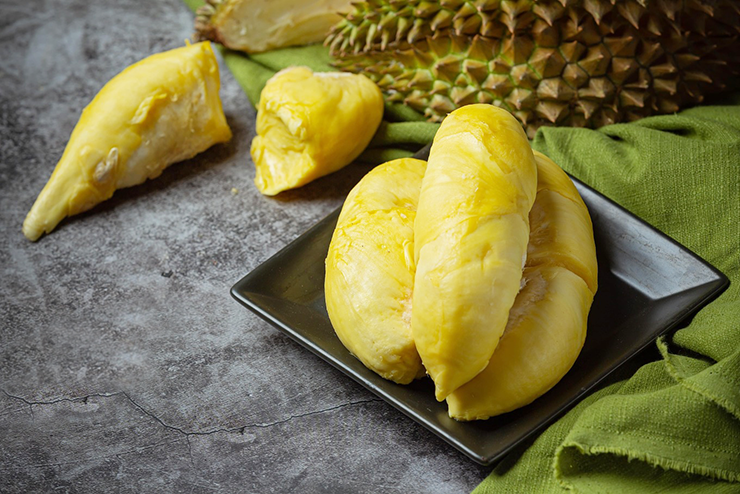
Durian, known as the “king of fruits,” is known for its strong odor and distinctive taste. Native to Southeast Asia, it grows primarily in countries such as Thailand, Malaysia, Indonesia, and the Philippines. The durian tree thrives in tropical climates with rich, well-drained soil and high humidity.
Durian has a unique taste that blends sweet and savory flavors, often described as a mix of almonds, cheese, garlic, and caramel. Its creamy, custard-like flesh contrasts with its spiky, thick rind. The fruit’s aroma is notoriously pungent, often compared to rotten onions or raw sewage, leading to its ban in many public places and transportation systems.
There are numerous durian varieties, each with distinct characteristics. Popular ones include Musang King, known for its bright yellow flesh and rich flavor, and Monthong, which has a milder taste and smoother texture. D24 is another favorite, valued for its bittersweet taste and creamy consistency.
The story behind durian’s discovery is steeped in legend and history. It has been a part of Southeast Asian culture for centuries, with early records mentioning its cultivation and trade. The fruit’s name is derived from the Malay word “duri,” meaning thorn, reflecting its spiky exterior.
Durian holds a special place in local traditions and cuisine. To eat durian, start by cutting along the seams of the spiky rind to open it. Remove the creamy flesh with your hands or a spoon. It can be eaten fresh, blended into smoothies, or used in desserts, candies, and savory dishes. Some people prefer to eat durian warm, believing that heating the fruit enhances its flavor and softens its texture. Despite its polarizing smell, durian remains a beloved delicacy for many, symbolizing the rich agricultural heritage of the regions where it grows.
The post Durian appeared first on The Fashiongton Post.
